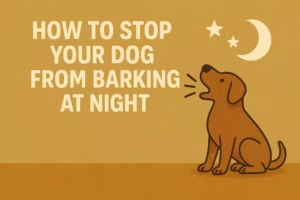Dogs are well-known for enjoying being caressed and rubbed by their owners. The “sweet spot,” which is positioned between the ears and at the base of the neck, is one of the most preferred places for dogs to be scratched. But do dogs like being scratched in this area?
According to experts, is a resounding yes. Scratching a dog’s sweet spot causes a physiological response in which endorphins, the body’s natural feel-good chemicals, are released.
This gives your pet a delightful experience, similar to how a massage or a warm bath can help us relax and feel good.
When you scratch their sweet spot, some dogs may begin licking the back of your hand, signalling that they are enjoying the sensation.
Key Takeaway
- Dogs enjoy being scratched in their sweet spot, which releases endorphins and creates a pleasurable sensation for them.
- Scratching a dog’s sweet spot is similar to how a massage or warm bath can help us relax and feel good.
- Some dogs may even start licking the back of your hand when you scratch their sweet spot, indicating that they are enjoying the experience.
Understanding Dog’s Sweet Spot
Dogs have an area on their bodies that they adore being scratched. This location is between the earlobes and at the base of the neck.
The “sweet spot” is so named because it causes a physiological response in dogs that releases endorphins, the body’s natural feel-good chemicals.
Scratching this area is an excellent approach to express your love and affection to your dog. Dogs enjoy being rubbed in this unique location since it is therapeutic for them.
It also has other advantages that make it an excellent method to bond with your pet.
Scratching your dog’s sweet spot can assist to calm them down. Scratching their sweet spot might help to settle dogs that are anxious or agitated for a variety of reasons.
It can also assist to relieve any irritation or pain they are feeling.
It is vital to realise that not all dogs appreciate being scratched. Some dogs love delicate scratches, while others prefer violent ones.
It’s critical to read your dog’s body language and respond appropriately. Stop scratching and try a new method if they appear uncomfortable or irritated.
Understanding your dog’s sweet spot is a terrific way to bond with them and show them love and affection. It is critical to approach it in a way that makes your dog feel safe and happy.
Science Behind Scratching the Sweet Spot
Why do dogs enjoy having their sweet spot scratched? The solution is found in their anatomy. Dogs’ neurological systems are extremely sensitive, and their skin is densely packed with nerve endings.
The sweet spot is a location where many nerves converge on the lower back around the base of the tail. When this area is scratched, the nerve endings are activated, sending messages to the brain that cause endorphins, or feel-good hormones, to be released.
This is why, when their sweet spot is rubbed, dogs frequently show signs of calm and enjoyment.
Scratching the sweet spot, according to Dr. Jill Sackman, a clinical animal behaviourist, can also elicit the scratch reflex, which is an involuntary movement of the hind limb.
When a dog’s belly is scratched, a nerve that goes from the spinal cord to the leg muscles causes this reflex.
When the sweet spot is scratched, this reaction is triggered, causing the dog to kick its leg in response.
It’s worth noting that not every dog enjoys having their sweet spot scratched. Some dogs may be hypersensitive in this area, whereas others may have had terrible experiences with being touched there.
When scratching your dog’s sweet spot, it’s critical to pay attention to their body language and emotions. It’s better to avoid this area if they appear uncomfortable or aggressive.
Overall, rubbing the sweet spot is an excellent technique to show attention to your dog and make them feel cherished.
It also stimulates their feel-good hormones and provides them with a sense of relaxation. However, it is critical to do it in a way that is comfortable for your dog and to observe their reactions.
Observing Your Dog’s Reaction
It is critical to observe your dog’s reactions when scratching their sweet spot. Dogs may have various preferences for where and how they want to be scratched, so it’s vital to watch their body language and behaviour to see if they’re having fun.
Relaxed body language, such as a wagging tail or a calm demeanour, are signals that your dog enjoys having their sweet spot stroked. For more, they may lean into the scratch or nuzzle your hand.
If, on the other hand, your dog appears uneasy or begins to walk away, it could be a clue that they do not appreciate being scratched in that particular region.
It is crucial to remember that each dog is unique, and what works for one may not work for another. Some dogs love mild scratching, while others prefer aggressive stroking.
Finding the sweet spot that your dog appreciates the most may require some trial and error.
If your dog appears to appreciate the scratch, combine it with additional friendly gestures such as cuddling or soothing vocalisations.
However, if your dog becomes uncomfortable or shows indications of distress, it is critical to halt the scratching and try again later or in a different location.
Overall, when it comes to scratching your dog’s sweet spot, it is critical to observe their reaction.
Paying attention to their body language and behaviour will allow you to judge whether or not they are enjoying the activity and adjust accordingly to ensure that it is a pleasant and happy experience for both you and your furry buddy.
Benefits of Scratching Your Dog’s Sweet Spot
Scratching your dog’s sweet spot can be beneficial to both you and your canine companion.
Here are some of the advantages:
Strengthening the Bond
Scratching your dog’s sweet spot is an excellent way to bond with him. Dogs enjoy being stroked, and scratching their favourite region can make them feel loved and cared for.
It also aids in the development of trust between you and your dog, which can lead to a stronger attachment.
Promoting Relaxation
Scratching your dog’s sweet spot can also aid in relaxation. Dogs carry a lot of tension in their body, and scratching their sweet spot might help them feel more relaxed by releasing that tension. It can also help your pet cope with stress and anxiety.
Health Checkup Opportunity
Scratching your dog’s sweet spot can also serve as a fast wellness checkup. You can check for lumps, bumps, or other anomalies by scratching your dog’s sweet spot.
In addition, look for indicators of pain or discomfort, such as flinching or drawing away.
Scratching your dog’s sweet spot is an easy and effective method to bond with your pet, encourage relaxation, and monitor their health.
Just keep an eye on your dog’s body language and stop if they appear uncomfortable or agitated.
Potential Risks of Over-Scratching
When it comes to scratching your dog’s sweet spot, it’s vital to remember that there are risks to over-scratching.
While scratching your dog can give relaxation and pleasure, too much of a good thing can be harmful.
Skin Irritation
Skin irritation is one of the dangers of excessive scratching. Excessive scratching can cause redness, lumps, and even open sores in dogs.
This is especially important if your dog has sensitive skin or a skin issue. It is critical to monitor your dog’s skin and cease scratching if you observe any signs of irritation.
Reinforcing Bad Habits
Overscratching has the potential to reinforce unhealthy habits. Dogs who enjoy scratching may develop an addiction to it and start to demand it all the time.
This may result in undesirable behaviours including excessive licking, biting, and scratching. To stop your dog from picking up undesirable behaviours, it’s critical to establish limits and restrict scratching.
While it can be enjoyable and therapeutic to scratch your dog’s sweet spot, it’s vital to be aware of the potential dangers of excessive scratching.
You can make sure that scratching remains enjoyable for you and your furry companion by being aware of your dog’s skin and establishing boundaries.
Tips to Scratch Your Dog’s Sweet Spot Effectively
There are a few things to remember when it comes to scratching a dog’s sweet spot to make the experience enjoyable for both the dog and the owner.
The following advice can help you successfully itch your dog’s sweet spot:
Start with the right spot
The sweet spot is typically found close to the point where the dog’s back and tail converge. Because of how sensitive this area is, the dog might get a lot of pleasure from being scratched there.
It’s crucial to keep in mind that not all dogs have the same sweet spot, so paying attention to the dog’s body language will help you determine where they want to be scratched the most.
Use the right amount of pressure
It’s important to use the proper amount of pressure when scratching the sweet spot. While too little pressure might not stimulate the body adequately, too much pressure may result in discomfort or even agony.
Starting gently and progressively increasing the pressure until you discover the ideal level that the dog appreciates is a good general rule to follow.
Avoid sensitive areas
While it may be fun for the dog to have a sweet spot scratched, it’s crucial to keep sensitive parts like the eyes and ears out of play.
These regions can be painful or uncomfortable to scratch, which may make the dog scared or hostile.
Pay attention to body language
When scratching a dog’s sweet spot, it’s important to pay attention to their cues as they express themselves through body language.
Wagging tails, relaxed muscles, and even a “smiling” look are indications of happiness. However, snarling, snapping, or relocating away from the scratch are indications of discomfort or tension.
Use positive reinforcement
Positive reinforcement is a powerful tool for motivating canine behaviour. It’s crucial to compliment and reward your dog when you scratch their sweet spot for excellent behaviour. Treats, verbal affirmation, or even a favourite toy are examples of this.
It can be enjoyable for both the dog and the owner to scratch the dog’s sweet spot. Owners can successfully scratch their dog’s sweet spot and give them the loving touch they long for by using the advice in this article.
Conclusion
It appears that dogs like having their sweet spot scratched. This is so that the dog and owner’s bond can be strengthened through this type of tactile attention.
One technique to show your dog love and devotion is to scratch the sweet spot. When they are enjoying a scratch, most dogs will wag their tails and may even lean into it.
It’s crucial to remember that not all dogs enjoy having their skin rubbed in the same place or manner. While some dogs might like a delicate head rub, others could prefer a rigorous belly scratch.
It’s crucial for dog owners to observe their dog’s body language and react appropriately.
Furthermore, it’s crucial to keep in mind that no two dogs are the same. While some dogs may appreciate nothing at all about being scratched, others could love other kind of affection like cuddling or fetching.
It is the responsibility of the owner to ascertain what their dog enjoys and to act accordingly.
Overall, giving a dog a sweet spot scratch can be a wonderful way to show your pet companion that you care.
File size
Just keep in mind to observe their body language and respond appropriately to make sure they are at ease and content.
Frequently Asked Questions Related To Do Dogs Like When You Scratch Their Sweet Spot
Why do dogs kick their legs when you scratch them?
A dog’s reflex may drive them to kick their legs when they are scratched in a particular location. This natural reaction, often known as the scratch reflex, is hardwired into a dog’s neural system. The scratch reflex is said to have survived from a dog’s wild ancestors, who would have used it to remove irritants and parasites from their fur.
What spots do dogs like to be scratched?
Dogs like to have their chest, tummy, and backs scratched, among other places. The “sweet spot,” which is found between the ears and at the base of the neck, is the preferred location for dogs, though. Endorphins, feel-good hormones that can help your pet relax and settle down, can be released by scratching this area.
Do dogs like it when you help them scratch?
Yes, dogs can benefit from their owners’ assistance in scratching elusive areas like their back or the area behind their ears. However, it’s crucial to be kind and keep your pet from suffering any pain or discomfort. A veterinarian should be consulted if your dog is overly scratching because this could indicate a health problem.
Where do dogs like to be petted most?
All over their bodies, dogs love getting touched, but some areas get more attention than others. In addition to the sweet spot, dogs also like to have their chests, bellies, and under-chin areas rubbed. To avoid stroking your dog in places where they feel uneasy or frightened, it’s crucial to pay attention to their body language.
Do dogs like it when you scratch behind their ears?
Dogs do enjoy getting their ears scratched, especially the area behind the ears. This area is extremely sensitive, and your dog may enjoy and feel relaxed by scratching it. However, it’s crucial to be careful and keep your animal buddy from experiencing any pain or suffering.
Why do dogs have a scratch reflex?
The neural system of a dog is built with a natural reaction called the scratch reflex. The reflex is said to have survived from the wild ancestors of dogs, who would utilise it to remove parasites and other irritants from their fur. When a dog’s skin is aroused, whether by contact or by an irritant, the scratch response is elicited. The dog kicks or scratches its leg when the response is triggered, which can assist in removing the irritant from its fur.








